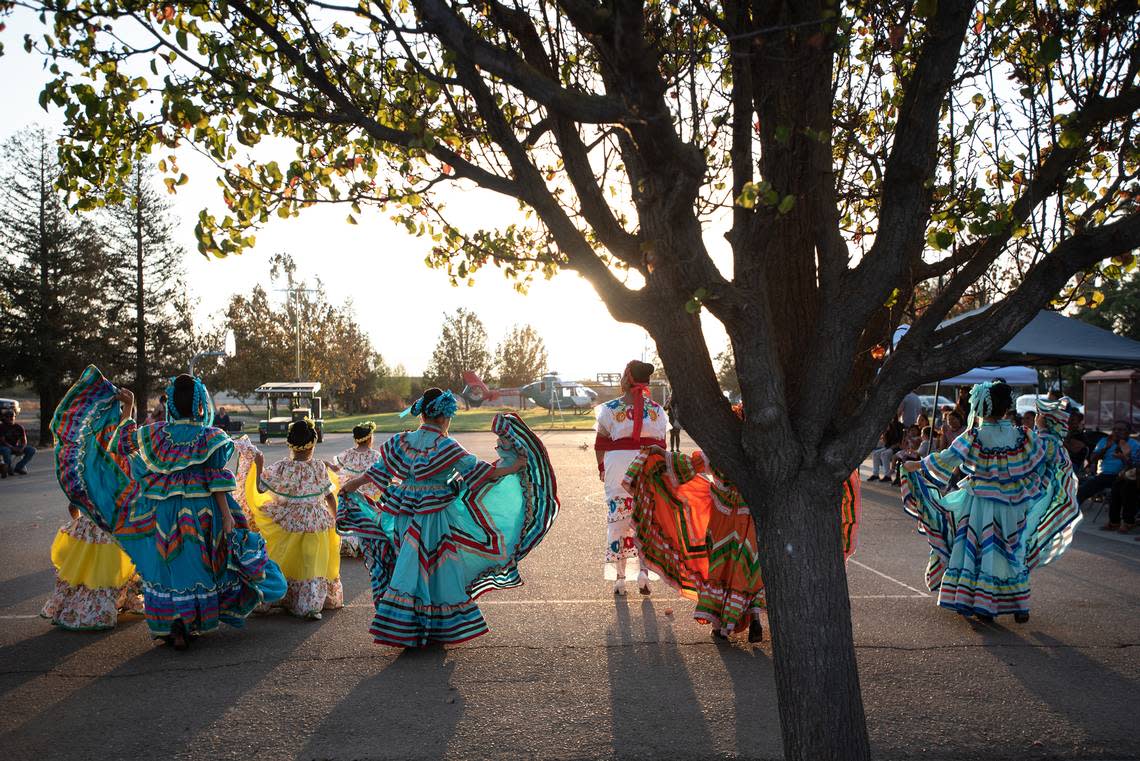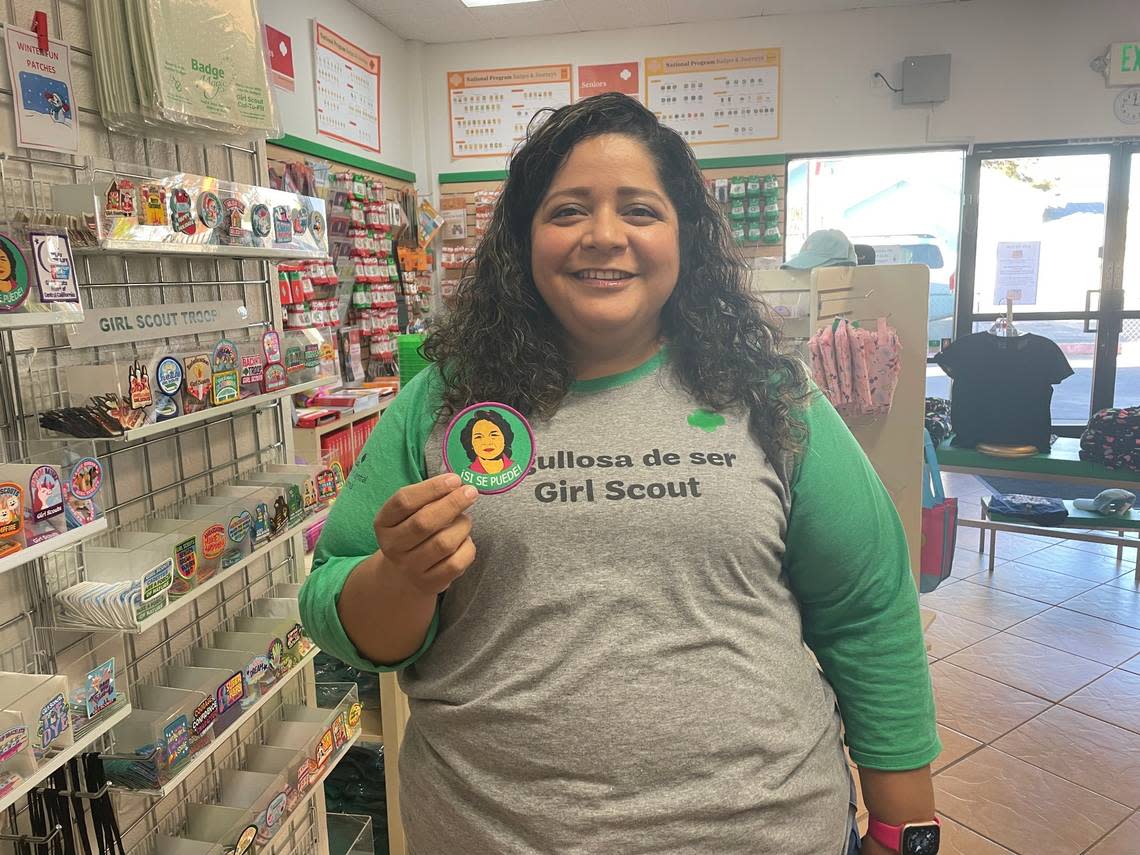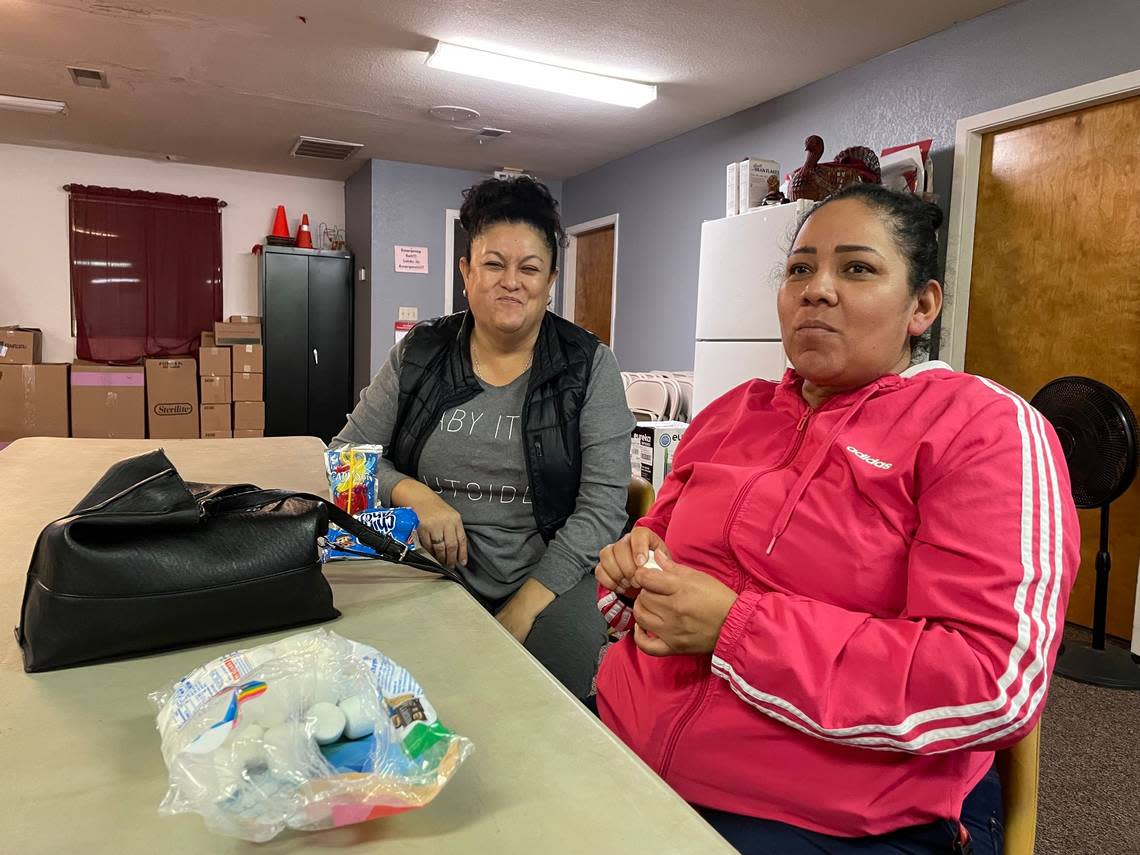Sí, se puede: Valley Latinas follow labor leader Dolores Huerta’s path to Girl Scouts
Dolores Huerta is many things: a union organizer, a civil rights activist and even the subject of a California state holiday. But before she became the Sí, se puede leader, she was a Girl Scout.
“Now that I look back at everything I’ve done in my life, I can say it started when I was a shy 8-year-old in Stockton and I became a Girl Scout,” she told an audience in 2007 during a Girl Scout fundraiser in Bakersfield.
Today, many Latina girls are following her lead. New Girl Scout troops are popping up in the Valley , led by Spanish-speaking mothers and their daughters, and the groups are melding this quintessential American institution with aspects of Mexican culture.
Carla Rivera remembers when, 15 years ago, a group of Girl Scouts from Modesto came to Grayson to explain the program. Though she didn’t speak English, her friend did, and persuaded Rivera to co-found a local troop.
“We were interested because they were talking about leadership for women, engaging them in activities that would allow them to grow as people,” Rivera said in Spanish.
Rivera’s daughter has aged out of the Girl Scouts program, but at a community event in Grayson, Rivera still volunteers with the mothers and daughters of the troop she co-founded. While they watch ballet folklorico and charro riding, the women chat in Spanish and help their daughters serve popcorn to spectators. Many of the girls, who prefer to speak English, are in high school now. Some have been part of the troop for more than a decade.

Their troop is likely the first one led by Spanish-speaking moms in the 18-county Girl Scouts Heart of Central California council, which stretches from Merced to Yuba City and east to the Sierra foothills, said Debbie Avila, recruitment lead for the regional organization.
“In the past, a lot of our peers weren’t Girl Scouts because they didn’t feel that Girl Scouts was for them,” said Avila, who also identifies as Latina. For many years after its founding in 1912, the organization discriminated against girls based on race, and many Girl Scout troops were segregated, Professor Amy Erdman Farrell told the Harvard Gazette. In an email, she told The Bee that regional administrators had the power to prohibit or limit Latinas from joining the Girl Scouts until the 1970s.

Avila, wearing a shirt that reads “Orgullosa de ser Girl Scout” or “proud to be a Girl Scout,” credits some of the recent growth to the Girl Scouts “Latina Initiative,” which took place in the late 2000s, around the same time Rivera started her troop. The program pushed for more Latina staff within the Girl Scouts organization, encouraged Latina mothers to found their own troops, and translated materials into Spanish.
Of the 8,000 Girl Scouts in the Heart of the Central California region, she estimated that roughly 20% identify as Latina. Stanislaus County is 49.5% Hispanic or Latino, according to the 2020 Census.
Avila’s council also is responsible for creating the first Dolores Huerta patch in honor of the former member. To earn the patch, Girl Scouts must learn about the issues facing farm workers, women and immigrants in the US.
Last year, Avila started her own troop in Modesto, where the majority of girls are Latina and many mothers speak Spanish. She pointed out two new troops, one in west Modesto and another in south Modesto, that are both majority Latina and led in part by Spanish-speaking mothers.
The south Modesto group meets at the Center Church in Bret Harte, where they raise their right arm, hold up three fingers and recite a promise to help others at the close of each program. It’s part of a tradition dating back more than 100 years, but these girls have added their own twist. They often recite the pledge in Spanish, too.
When the girls and their parents come together for a photo, they say “chips” because some mothers struggle to pronounce the English word “cheese,” said Nancy Martinez, the group’s founding leader.
Martinez also adapted the Girl Scout camping tradition to the needs of this south Modesto group.

Normally, girls attend Girl Scout camp with girls from other troops, she said, but “camping is not really a thing that a lot of Latinos have done.” To make the mothers more comfortable with the idea, she allowed the mothers to attend, too. Together, the mothers and daughters danced to Latin music and made enchiladas, among other activities.
Raquel Hernandez attended the camp with her daughter, Emily. She doesn’t see anything uniquely Latina about her daughter’s Girl Scout experience. “It’s the same for everyone,” she said in Spanish. “It’s just that more Latinos are joining.”
Emily, 11, is proud of her Latina heritage and bilingualism. “I think it’s amazing that I have the opportunity to speak more than one language,” she said, standing next to her mom.
Martinez tries to translate everything for the troop, both from English to Spanish and Spanish to English.
Norma Thurman wanted her daughter, Janelle, to join the troop in part so she could improve her Spanish when speaking to her grandparents or traveling to Mexico. Janelle is the only girl in the troop who is not bilingual, said Martinez, but she’s been practicing how to say the Girl Scout promise in Spanish.
